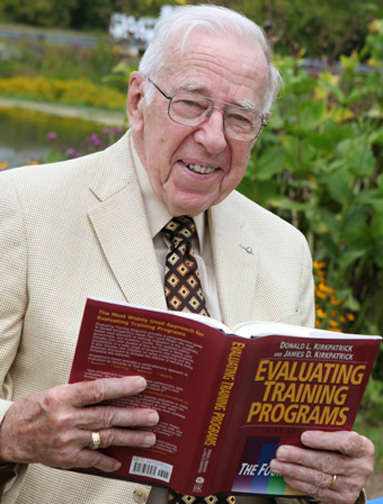For some time now we've all been hailing the advantages of social media. One advantage, of course, is crowd sourcing, where ideas are vetted and often actual work is accomplished through social media networks without compensation. This is surely a useful tool available through Twitter, Google+ and the rest. Lately I've been considering ways that I can perhaps expand my network for cross-functional insights into my areas of expertise in an effort to increase effectiveness. I've been wondering how I might build a hybrid collaborative dialogue with different industry specialists.
I got excited about the idea when I read a story about how the head coach of the NBA's Miami Heat, Erik Spoelstra, spent his free time during the NBA lockout late in 2011. Spoelstra coaches one of the NBAs top teams (in preseason predictions, the Heat were overwhelming favorites to win the 2011 - 2012 championship). Instead of only conferring with past great basketball coaches and players to determine what he could do to become a better coach and better position his team for a strong post-season, he visited a number college football team practices and training camps. He went to observe, listen, and ask a lot of questions and to learn. Then Spoelstra put a plan together to reinvent his team. It's still early in the season, but as of right now (January 27, 2012), the Heat is leading its division, so perhaps there was something to Spoelstra's vision.
Not long after I heard about Coach Spoelstra's off-season journey, I read a blog by Bill Taylor on HBR Blog Network titled "Are You Learning as Fast as the World Is Changing?" In his blog, Taylor outlines a few ideas he's developed that help leaders continue to evolve and learn as fast as the world does. He states that an important way to keep up with industry, as well as push innovation, is to remember that "the best source of new ideas in your field can be old ideas from unrelated fields."
At this point, I asked myself: where can I go to learn established ideas in other fields that might translate well in my training development and performance support world? I've realized that one major short-coming I see for those of us in the training industry is that we rarely look outside ourselves for ways to improve what we do. We're stuck in ADDIE, or even revised ADDIE, Bloom's taxonomy, and Kirkpatrick's levels of evaluation. Sure, we talk about modified ADDIE and the "new" Bloom's taxonomy, but we rarely listen to how things that might be similar are done outside the L&D field. Even when considering important and complex concepts such as content management technology implementation and learning object reusablility, we still rely on work done 10, 20, 30 or more years ago.
I'm not advocating that we toss out our established principles of effective content development and operation support. I am, however, advocating that we start seriously questioning ideas conceived before the computer, or even before the explosion of tools like Twitter, when we discuss the micro-level of training and learning.
So far, I haven't made much progress expanding my network, primarily because all my ties are rooted in the world of learning and development. I'm planning to stretch a little, starting with the operational teams of the company I currently work for.
Additionally, in learning and development we face similar challenges to any design/development group when it comes to project management so I plan to look outside the typical project management practices to see what practices I might implement in my sphere of influence to enhance team dynamics and project effectiveness. My first foray into alternative project work flow may be a dip into the world of Results Oriented Work Environment (ROWE).
I've found some good sources on ROWE, two of which include an article focused on the concept at opensource.com called "Results-Oriented Work Environment a product of changing work landscape" (by Erica Moss) and another at inc.com, by Issie Lapowsky, which includes ROWE as an option to help keep employees engaged (click here to see the article). From what I can see so far, ROWE is typically employed by software development firms. The similarity between office attendance for software engineers and instructional designers is enough to make me think this is a possibility.
In short, ROWE moves the focus from how much time someone spends on a project, or in the office, or in front of the computer, and instead focuses on the results of a project. It advocates that employees should be judged not on the amount of time they spend working, but instead should be judged on the results of their work. This allows them the freedom many people crave. It also requires that employers offer virtual work options. Some may find it hard to reconcile this with the strict management of time and resources for projects. However, I can see that as team leads and project managers, we can still estimate the amount of effort, time, and resources required for a project without requiring that the work is done in a cube in the office or even between 8 am and 5 pm.
I'll post again with some preliminary results on my two tasks: 1) reach out to operational departments to observe and learn how they create productivity and 2) pilot implementation of ROWE with my team.
 |
| Miami Heat head coach, Erik Spoelstra |
At this point, I asked myself: where can I go to learn established ideas in other fields that might translate well in my training development and performance support world? I've realized that one major short-coming I see for those of us in the training industry is that we rarely look outside ourselves for ways to improve what we do. We're stuck in ADDIE, or even revised ADDIE, Bloom's taxonomy, and Kirkpatrick's levels of evaluation. Sure, we talk about modified ADDIE and the "new" Bloom's taxonomy, but we rarely listen to how things that might be similar are done outside the L&D field. Even when considering important and complex concepts such as content management technology implementation and learning object reusablility, we still rely on work done 10, 20, 30 or more years ago.
 |
| L&D Evaluation Titan and Packers fan, Donald Kirkpatrick |
So far, I haven't made much progress expanding my network, primarily because all my ties are rooted in the world of learning and development. I'm planning to stretch a little, starting with the operational teams of the company I currently work for.
Additionally, in learning and development we face similar challenges to any design/development group when it comes to project management so I plan to look outside the typical project management practices to see what practices I might implement in my sphere of influence to enhance team dynamics and project effectiveness. My first foray into alternative project work flow may be a dip into the world of Results Oriented Work Environment (ROWE).
I've found some good sources on ROWE, two of which include an article focused on the concept at opensource.com called "Results-Oriented Work Environment a product of changing work landscape" (by Erica Moss) and another at inc.com, by Issie Lapowsky, which includes ROWE as an option to help keep employees engaged (click here to see the article). From what I can see so far, ROWE is typically employed by software development firms. The similarity between office attendance for software engineers and instructional designers is enough to make me think this is a possibility.
In short, ROWE moves the focus from how much time someone spends on a project, or in the office, or in front of the computer, and instead focuses on the results of a project. It advocates that employees should be judged not on the amount of time they spend working, but instead should be judged on the results of their work. This allows them the freedom many people crave. It also requires that employers offer virtual work options. Some may find it hard to reconcile this with the strict management of time and resources for projects. However, I can see that as team leads and project managers, we can still estimate the amount of effort, time, and resources required for a project without requiring that the work is done in a cube in the office or even between 8 am and 5 pm.
I'll post again with some preliminary results on my two tasks: 1) reach out to operational departments to observe and learn how they create productivity and 2) pilot implementation of ROWE with my team.

No comments:
Post a Comment